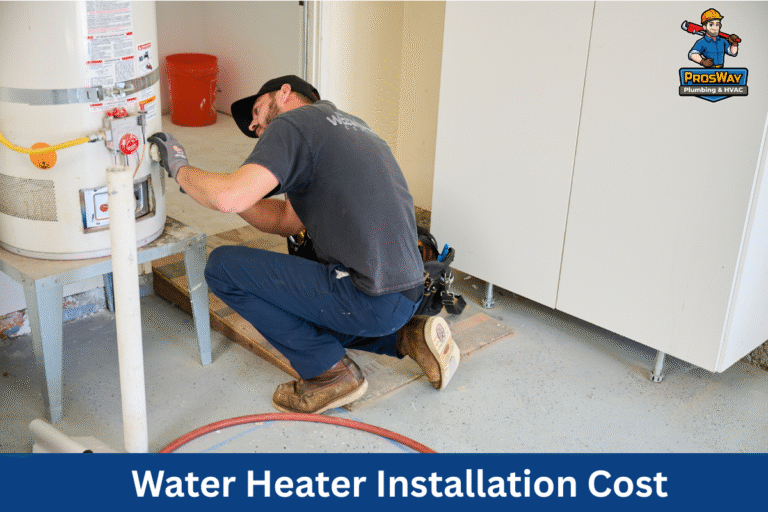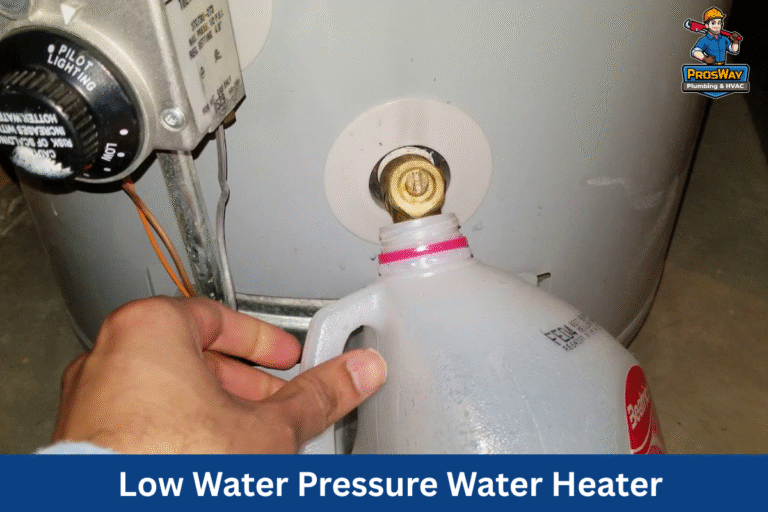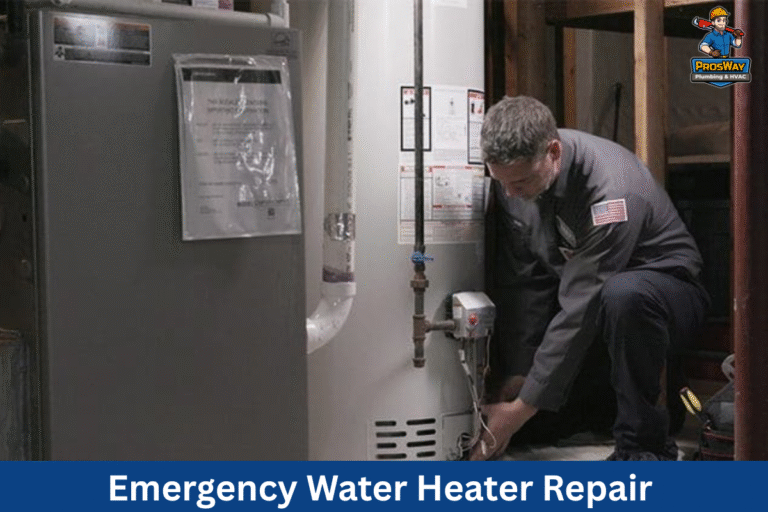Are plumbing issues causing hassles in your home? Many homeowners face sewer line problems, yet few understand how to address them effectively.
This post provides guidance on how to successfully repair your own sewer line , gathering essential tools, and executing repair techniques safely.
By the end, you’ll learn how to locate damage accurately, complete repairs confidently, and maintain your sewer systems afterward.
With this knowledge, common sewer line issues can be tackled, saving time and money while ensuring peace of mind.
What Should You Know Before a DIY Sewer Line Repair?
Before attempting a DIY sewer line repair, it’s essential to assess several factors. Signs that indicate a sewer line issue will guide the decision to act.
Common causes of sewer pipe damage can reveal potential risks. Evaluating the complexity of the problem helps determine if professional intervention is necessary.
Checking local permit requirements ensures compliance with regulations before starting work.
Signs Your Sewer Line Needs Attention
Homeowners should be aware of several signs indicating a need for sewer line repair. Slow drains or frequent clogs in multiple fixtures often point to a deeper problem.
Additionally, unusual odors around the property can signal a sewer leak, highlighting the urgency of assessing the system’s integrity.
Another critical sign is the presence of excessive moisture on wet ground in the yard. This condition may suggest a broken sewer line.
Watch this video for more information: Signs your sewer pipes need attention.
Homeowners who notice these signs should act quickly and consider whether their skills are sufficient for a successful repair.
Causes of Sewer Pipe Damage
Sewer pipe damage commonly arises from several factors that homeowners should understand before attempting repair.
Tree roots are one of the leading causes of broken pipes, as they can grow into sewer lines through small cracks, leading to blockages.
Additionally, shifts in the soil, often due to heavy rainfall or drought, can cause pipes to crack or collapse, necessitating urgent attention to avoid further issues.
Another frequent cause of damage is the age and material of the pipes themselves. Older pipes made of clay or cast iron are more susceptible to deterioration over time.
Homeowners should also be aware of the impact of improper disposal of materials, such as grease or wipes, which can cause buildup and blockages.
When Should You Call a Professional Instead?
Homeowners should recognize that certain scenarios need professional sewer service. When multiple drains back up simultaneously, these signs often indicate a major blockage.
In such cases, it’s crucial to engage experienced plumbers who can diagnose the problem accurately and provide effective solutions.
Moreover, if a homeowner encounters visible leaks or unsanitary conditions in the yard, it may signify a broken sewer line.
These issues can pose health risks and require immediate attention from professionals equipped to handle hazardous materials safely.
When to call in a professional service ensures that the homeowner avoids potential health hazards and costly repairs.
What Tools and Gear Do You Need for a DIY Sewer Line Repair?
Proper preparation is key to successfully repairing a sewer line. Homeowners should compile a complete sewer line repair toolkit, which includes essential plumbing tools.
Selecting appropriate personal protective equipment (PPE) is vital for safety during the repair process. Preparing the work area for safe excavation will ensure the project runs smoothly.
Compile Your Sewer Line Repair Toolkit
To successfully repair a sewer line, homeowners need to gather a comprehensive toolkit tailored for plumbing tasks.
Essential items typically include:
- A plunger
- A drain snake
- A pipe wrench
- Various sizes of pipe fittings.
Having these tools on hand allows for the efficient addressing of common problems, ensuring a smoother repair process.
In addition to general plumbing tools, personal protective equipment (PPE) is crucial for safety during the repair job.
Homeowners should wear gloves, goggles, and masks to protect themselves from potential exposure to hazardous materials.
Why Is Personal Protective Equipment So Important?
Selecting appropriate personal protective equipment (PPE) is critical for homeowners planning to repair their sewer lines.
Essential PPE includes gloves, goggles, and masks that safeguard against hazardous materials and unpleasant odors.
For instance, gloves protect the skin from contact with sewer waste, while goggles shield the eyes from splashes and debris during the repair process.
In addition to basic PPE, homeowners should consider wearing waterproof boots during sewer line repairs.
These specialized boots offer further protection against harmful substances and provide a secure grip in potentially slippery environments.
Ensuring the right protective gear is worn instills confidence, allowing homeowners to focus on effectively addressing their sewer line issues.
How Can You Prepare the Work Site Safely?
A clean work zone improves accessibility and prevents accidents around excavation sites. This preparation also reduces delays during the repair itself.
Failing to do so can result in damage to water, gas, or electrical systems, turning a DIY fix into a costly emergency.
These safety steps are essential when exploring how to successfully repair your own sewer line, making sure the job runs smoothly and minimizes hazards.
How Can You Accurately Locate Sewer Line Damage?

To accurately locate sewer line damage, homeowners should consider various practical methods. Using a drain camera allows for an internal visual inspection of the pipes.
Hydrostatic pressure testing can further identify leaks. Homeowners should also map the sewer line path on their property and mark the precise spot for digging.
Use a Drain Camera for Internal Visual Inspection
Using a drain camera for internal visual inspection is an effective method for homeowners to identify sewer line damage accurately.
This tool allows them to view the inside of the pipes without extensive digging, helping to pinpoint blockages, cracks, or any other issues that may be present.
By investing in a sewer camera, they can save time and effort, determining the exact nature of the problem before proceeding with repairs.
During the inspection, homeowners are better equipped to make informed decisions regarding potential repairs.
For instance, if the camera reveals tree root intrusion or significant buildup, they may opt for a specialized repair solution instead of more invasive methods.
When Should You Perform Hydrostatic Pressure Testing?
Hydrostatic pressure testing is useful when you suspect hidden leaks in your sewer system. A decrease signals that water is escaping, pinpointing areas that may not be visible even through a drain camera.
This diagnostic method is especially beneficial when visual signs like yard moisture or slow drains don’t indicate a clear blockage.
It’s also an essential step in preparing for how to successfully repair your own sewer line, ensuring the root issue is correctly identified before attempting a fix.
Where Should You Mark for Digging?
To ensure an effective sewer line repair, homeowners must accurately mark the precise spot for digging based on the identified damage location.
Using a combination of mapping tools and visual indicators, such as flags or spray paint, can help define the area that needs excavation.
Taking the time to map out the digging site minimizes the risk of damaging nearby utilities and enhances the efficiency of the repair process.
Misjudgment in placement can lead to unnecessary work, increased labor costs, or potential legal issues with utility lines.
By clearly marking the digging site, individuals prepare themselves to tackle the repair confidently, ensuring a smoother sewer line repair experience.
What Are the Safest DIY Techniques for Sewer Line Repairs?

Homeowners can effectively tackle sewer line repairs by following key techniques. Preparing the damaged pipe section for mending sets the foundation for success.
Applying a pipe patch or clamp addresses minor issues, while cutting out and replacing a compromised segment ensures integrity.
Proper alignment and secure fittings are critical for lasting repairs. Additionally, investigating DIY pipe lining kits may offer suitable solutions.
How Should You Prepare the Pipe Section for Repair?
Homeowners should first remove any debris or obstructions from the pipe to ensure a clear working area.
A wire brush or a clean cloth can be effective for this purpose, as it eliminates rust and buildup, allowing for a proper seal during the repair process.
Once the pipe is clean, it is essential to inspect the area for breaks. If any significant damage is identified, it’s crucial to cut away the compromised section before proceeding.
Properly preparing the damaged area ensures a successful repair, substantially reducing the likelihood of future leaks and prolonging the life of the sewer line.
Apply a Pipe Patch or Clamp for Minor Issues
When homeowners notice small cracks or pinhole leaks, these methods can effectively seal the damage without the need for extensive repairs.
A pipe patch involves placing an adhesive patch over the compromised area, while a clamp can tightly secure the pipe, providing immediate relief.
For maximum effectiveness, the damaged area should be thoroughly cleaned before applying the pipe patch or clamp.
Homeowners should remember that while these techniques are suitable for minor issues, significant damage may still require the expertise of a professional plumber.
Why Is Proper Pipe Alignment and Secure Fittings Important?
If pipes are not aligned correctly, it can lead to issues such as leaks and blockages that require more extensive repairs.
Homeowners should take the time to adjust the pipes, checking that they fit snugly into the fittings while maintaining the recommended slope for drainage, usually around 1/4 inch per foot.
Using the right adhesives and fittings when connecting sections of the sewer line helps create a reliable seal that can withstand the pressure of waste flowing through the pipes.
Homeowners should aim to follow the manufacturer’s instructions and ensure they allow adequate drying time for any glue or cement used.
This attention to detail enhances the durability of the repair and reduces the risk of future leaks or failures in the sewer system.
What Steps Should You Take to Confirm the Repair Is Successful?
After completing the sewer line repair, homeowners should conduct a water flow and leak test on the mended section to ensure its integrity.
Next, backfilling the excavated area must be done methodically, followed by compacting the soil correctly to prevent future settling.
Restoring any landscaping materials will help return the area to its original condition, completing the repair process effectively.
How Can You Perform a Proper Water Flow and Leak Test?
After completing the sewer line repair, homeowners need to conduct a thorough water flow and leak test on the repaired section.
To initiate this test, they should slowly run water through the pipes, observing for any signs of leakage or irregular flow.
Ensuring that the water moves smoothly without any pooling indicates that the repair is successful and that the integrity of the sewer line has been restored.
Homeowners may need to tighten fittings, reapply adhesive, or even revisit their repair methods depending on the severity of the problem.
By addressing these concerns promptly, homeowners can avoid future complications and maintain a properly functioning sewer system.
Backfill the Excavated Area Methodically
Backfilling the excavated area should be done carefully to ensure the integrity of the repair. Homeowners should start by layering the soil in small amounts.
This practice minimizes future settling, preventing potential damage and ensuring a reliable plumbing system.
If the area is not filled correctly, it may lead to sinking or uneven surfaces that can affect landscaping and drainage.
By taking the time to backfill methodically, homeowners can restore their property while safeguarding the efficacy of the sewer line repair.
What’s the Best Way to Restore Landscaping or Surface Features?
After completing sewer line repairs, restoring landscaping or surface materials is essential to return the site to its original condition.
Homeowners should take care to replace any sod, plants, or decorative elements that were disturbed during the excavation process.
By carefully replanting grass or flowers and leveling the ground, they can prevent erosion and promote healthy growth, ensuring the yard looks inviting once again.
Additionally, homeowners may want to consider applying mulch or decorative stones around the repaired area to enhance aesthetics.
A well-restored outdoor space can significantly improve property value and create a positive impression for visitors and potential buyers alike.
Why Should You Maintain Your Sewer System After Repair?

Homeowners can prevent sewer line repairs through effective maintenance strategies. Implementing preventive actions against future pipe damage.
Adopting proper waste disposal practices throughout the household and recognizing early warning signs of new sewer issues are essential for ensuring long-term functionality.
What Preventive Steps Help Avoid Future Pipe Issues?
Regularly monitoring what goes down the drains is essential; items such as grease, food scraps, and non-flushable materials can lead to clogs and long-term damage.
Implementing simple habits, like using drain screens and educating family members about proper waste disposal, can significantly reduce the risk of sewer line issues.
Scheduling maintenance sewer line inspections can also be beneficial in identifying potential problems before they escalate.
Homeowners can invest in professional camera inspections to locate minor issues like tree root intrusion or pipe corrosion early.
By maintaining regular upkeep and addressing concerns promptly, households can ensure the longevity of their sewer systems and avoid costly repairs in the future.
Schedule Periodic Sewer Line Camera Inspections
Scheduling periodic sewer line camera inspections is a proactive strategy for homeowners who have recently completed sewer line repairs.
These sewer line inspections allow for a visual assessment of the inner condition of the pipes, helping to identify issues such as cracks or tree root infiltration before they worsen.
Homeowners can utilize this approach to ensure that their sewer lines maintain optimal performance, providing peace of mind that potential problems are caught early.
By closely monitoring the condition of the pipes, homeowners can respond to any emerging concerns swiftly, preventing costly repairs in the future.
This method of maintenance reinforces a reliable sewage system, allowing homeowners to avoid disruptions and maintain their properties effectively.
How Can Proper Waste Disposal Extend Pipe Life?
To maintain a well-functioning sewer system after a repair, homeowners must adopt proper waste disposal practices throughout the household.
Simple actions, such as avoiding the disposal of grease, oils, and food scraps down the drain, can significantly reduce the risk of clogs.
Educating all family members about what is safe to flush and what needs to be thrown away can help prevent unnecessary strain on the sewer line.
Additionally, homeowners can benefit from implementing the use of drain screens and regularly cleaning them to catch debris.
By making waste disposal a shared responsibility, households can protect their sewer system and ensure that the recent repairs remain effective.
Conclusion
Successfully repairing your own sewer line can save homeowners both time and money, while also preserving the integrity of their plumbing system. The signs of sewer issues, evaluating repair complexity, and gathering the right tools are crucial steps in the DIY process. Additionally, implementing preventive measures and scheduling regular inspections will help maintain the sewer system’s functionality after repairs are made. By taking a proactive approach, homeowners can ensure a reliable sewer system, enhancing the overall value.
Need Help? Call ProsWay for Expert Support
If you’re unsure about the condition of your sewer line, contact ProsWay Plumbing & HVAC for trusted guidance. Call us now at (862) 260-5870 or Book Online because we’re here to help you protect your home, every step of the way.








